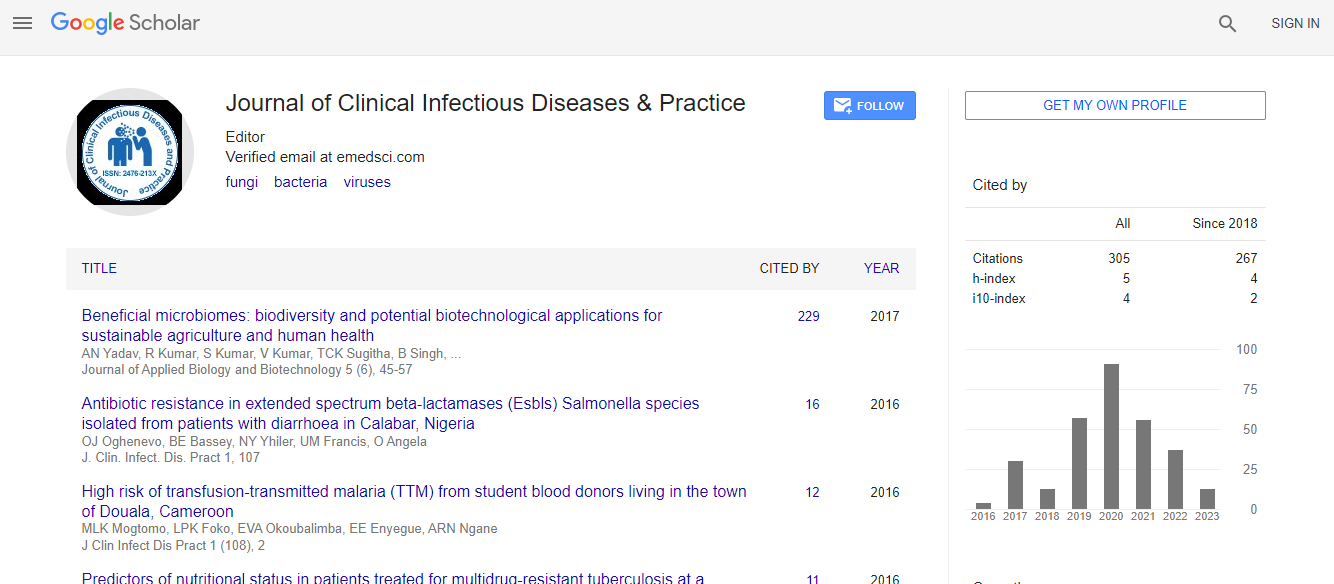Our Group organises 3000+ Global Conferenceseries Events every year across USA, Europe & Asia with support from 1000 more scientific Societies and Publishes 700+ Open Access Journals which contains over 50000 eminent personalities, reputed scientists as editorial board members.
Open Access Journals gaining more Readers and Citations
700 Journals and 15,000,000 Readers Each Journal is getting 25,000+ Readers
Google Scholar citation report
Citations : 531
Journal of Clinical Infectious Diseases & Practice peer review process verified at publons
Indexed In
- Google Scholar
- RefSeek
- Hamdard University
- EBSCO A-Z
- Publons
- ICMJE
Useful Links
Share This Page
Integrated control and prevention of malaria (Anopheles stephensi) and dengue (Aedes aegypti) vectors with plant extracts through water, insecticides and BTI
9th World Congress on Rare Diseases and Orphan Drugs
Imran Ahmed, Shabab Nasir, Farhat Jabeen, Faisal Hafeez and Rizwan Sikandar
Government College University, PakistanAyub Agriculture Research Institute, Pakistan
Posters & Accepted Abstracts: J Clin Infect Dis Pract
Abstract
Mosquitoes act as life threatening disease vectors. Due to non-availability of vaccine and treatment for most of these diseases, the only solution is to control the mosquitoes. The continuous application of synthetic insecticides causes development of resistance in vector species, biological magnification of toxic substances through the food chain and adverse effects on environmental quality and non-target organisms including human health. So, under the Integrated Mosquito Management (IMM), emphasis is given on the application of alternative strategies in mosquito control such as use of insecticides, plant extracts and Bti. Mosquito larvae were collected from different habitats and brought for identification. After identification, Anopheles and Aedes mosquitoes were reared separately and treated with different plant extracts, growth regulators and Bti. Plant extracts through water and insecticides and Bti were tested in combination to test their efficacy against Anopheles and Aedes larvae. Again mortality data was collected and subjected to prohibit analysis to calculate LC50. The least value of LC50 (162-398 ppm) observed with solution of water extracts, Bti and insecticides for Anopheles and Aedes larvae. By adopting these techniques we should able to manage the populations of Anopheles and Aedes in the environment.Biography
E-mail: sohniimran.1222@gmail.com

 Spanish
Spanish  Chinese
Chinese  Russian
Russian  German
German  French
French  Japanese
Japanese  Portuguese
Portuguese  Hindi
Hindi 
